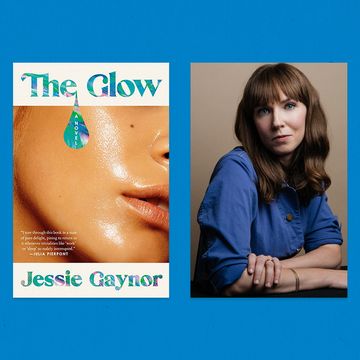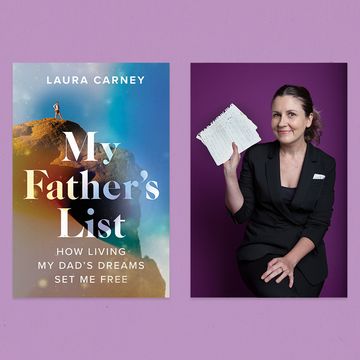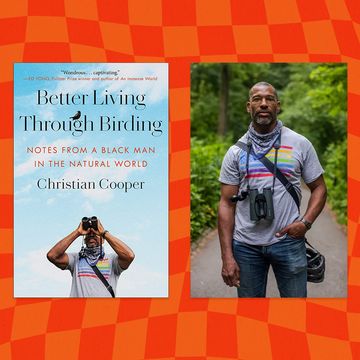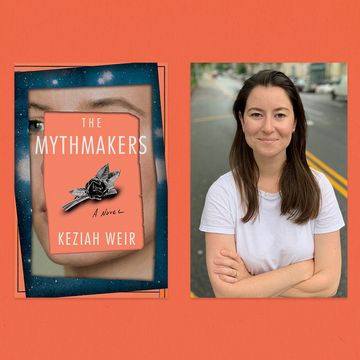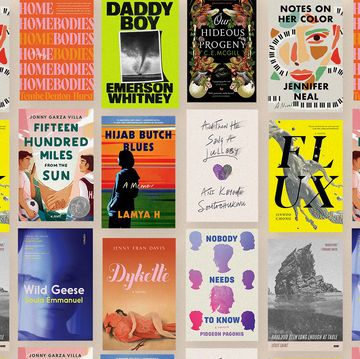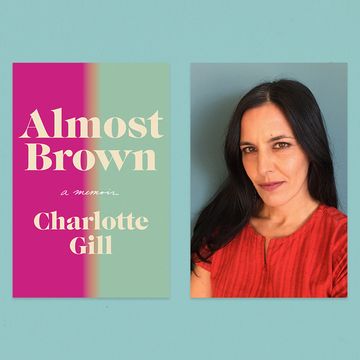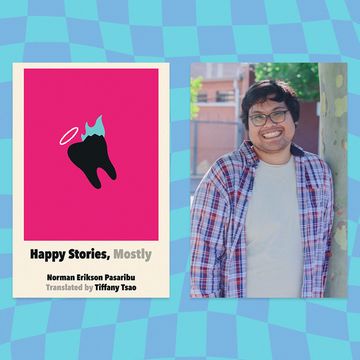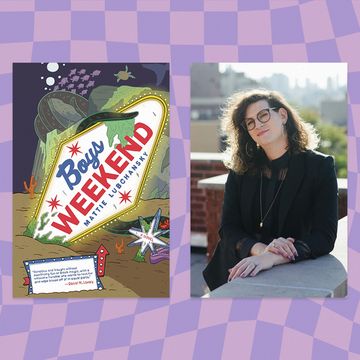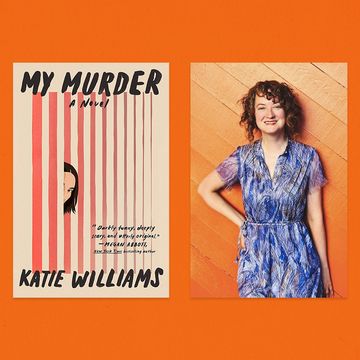Chicago-based author Julia Fine reached all the way back to her childhood to write her latest novel. She remembers an audiobook on a cassette tape called Vivaldi’s Ring of Mystery that featured a child learning from 18th century Venetian composer Antonio Vivaldi. The famous composer was a teacher at an all-girls orphanage in Venice, the Ospedale della Pietà, and after Fine watched a documentary about Vivaldi, her novel took off.
In Maddalena and the Dark, readers follow two teenage girls dealing with “obsession” who are sent away to an institution. The first student is Luisa, an orphaned violin player who keeps coming in second despite her best efforts. The second student, Maddalena, has a loving father and brothers, but after her mother flees with a lover and causes the scandal of the century, she’s sent to the school to acquire some skills to ensure that she’s prepared for marriage. She and Luisa grow close, especially once Maddalena figures out how to get favors from a supernatural being, but their goals aren’t exactly aligned, to disastrous consequences.
Fine, who’s also the author of The Upstairs House, caught up with Shondaland to talk about Venice, fairy-tale spookiness, and the dark corners that come with being a teenage girl.
SHELBI POLK: So, was the hospital system in the book real?
JULIA FINE: Yeah, so it’s real! It was started by these different groups of nuns and monks in different sects of Catholicism. Basically, different groups had these church institutions. There was one for people who had chronic diseases, one for the poor, one that was specifically set up for the illegitimate daughters of the upper classes, or courtesans. If you had a kid and you couldn’t take care of it, you could drop it off at this church school. And over time, these organizations, because they were all affiliated with churches and because so much music was played in churches, would hire different composers to lead the church orchestra. And over the years, they turned into these music conservatories. There were four of them in Venice, of which the Pietà was one. I think the other ones also had, probably for their time, fairly prestigious concertmasters, but obviously, for us Vivaldi is the one whose name really lasted popularly. So, these girls would be for the most part orphaned girls, or girls whose parents couldn’t support them. They would get dropped off as babies usually and then just be taught music. And there were other parts of the institution. They weren’t all musicians, because somebody was keeping it running. The best role to have would be as a musician because instead of doing laundry, you got to just play your instrument all day.
SP: Your first novel also focused on teenage girls and fairy tales. Why do you think this feels like such a magical age?
JF: Oh, my gosh, I think your hormones are going crazy at that age. It’s a combination of puberty and also just not having had very much experience. Everything that you feel — not everything but a lot of the things you feel — not only are you feeling it extra intensely, it also is the first time you’re experiencing something like a really legitimate crush or sexual desire. Jealousy, any of the feelings that you’re having, you just haven’t been in the world long enough to know what to do about these things. I just think back on all the times I thought it’s the end of the world because of X, Y, and Z as this 15-year-old when it was really not that big of a deal. So, I think that just makes it a really interesting time. Because what’s interesting to me always is people making decisions and how they make decisions. And particularly justifying bad decisions. I’m always interested in reading about that, and it seems like an age where so many dumb things make perfect sense through the lens of a teenager. And then when you add having it be particularly teenage girls who — I think from birth, today and in 1700s Venice — are socialized in very restrictive ways, given crazy ideals that they feel like they have to match up to, and I think sort of pitted against each other in various ways, that makes it especially interesting.
SP: So, the supernatural element to this book isn’t subtle, but it’s not overwhelming either. It’s a really careful balance, and I thought it was a really interesting way to explore the question “What is it worth to get what you want?”
JF: When I started writing this book, I knew I wanted to write about this time and place. I found myself immediately limited by just what, historically, life would have been like for a girl at the Pietà. Oh, she goes from church to bed to the music room [back] to bed. There wasn’t any way really to get outside the walls of the Pietà. So, as I was writing, I was like, “I know that this time period in this world and the things I’m trying to say about it, there’s too much there to just write a story about mean girls at the Pietà.” I wanted it to be bigger than that. So when I was trying to figure out what would get them outside, there were so few things that would both get them outside the walls of the building but also give them enough choice and freedom to make it interesting as a story. I could have had Luisa get married immediately. But then it’s like, well, now she’s married; there’s no story there. So, a lot of it came initially from the need to just have characters moving around doing things. But it was also that the atmosphere, I think, led me in a fairy-tale direction. If you go to Venice now, it feels like you’re in a fairy tale just because it’s so preserved. At least superficially, it looks the way it has looked for hundreds of years. There are no cars, which makes a huge difference, and just the way that the city is set up feels very magical. On top of that, the water itself, I thought, was just so ripe for interpretation. It’s a city, lagoon; there’s canals everywhere. It felt like of course there’d be some creature here in this city that, even without magic, feels magical. So, I think it all fell into place from there. And then, like you said, this idea of having to make sacrifices and not necessarily understanding what they are that set the fairy-tale theme.
SP: Did you get to go to Venice while you were writing?
JF: Yeah, because it was during the pandemic that I was working on this book, my trip got pushed [back] quite a few times. But it ended up being perfect because I went, and basically I’d written the book and was just restructuring and editing. So, I got to go, and it really felt like almost a pilgrimage to all of these places I had researched and written about. I can’t imagine going without having done all of the research. I think the next time I travel anywhere major, I’m totally going to spend months researching first because it just adds to the experience at a whole other level.
SP: Totally. You mentioned that you wanted to write about Venice at this specific moment in history. What drew you to this period?
JF: Initially, it was as simple as how it would be sort of sexy to have Vivaldi in this. I had to look at his biography for a time where he would have definitely been in Venice. For a book that’s about a magical sea creature, it was really important to me that all of the timelines line up so no one could look it up and be like, “He was living in Florence then.” So, I found this time period, and the more that I read about it, the more it seemed to echo our current time in terms of a once-dominant political system that had worked pretty well for hundreds of years. The beginning of the end for the Republic of Venice was around the turn of the 17th and 18th centuries. Venice had been this huge naval power, and all of a sudden, other countries had the technology. So, they no longer were dominant there, and they had had these trade routes, but other trade routes had been found, and their political system was getting more convoluted. There seemed like a lot of parallels in terms of the people spinning the wheels were not necessarily looking out for the interests of the long-term republic. You can start to pinpoint where things go south or vanish around that time. So, I thought it would be an interesting time to write about because, obviously, Venice is part of Italy; therefore, it does not remain an independent republic. If you’ve done any research, you know where it’s headed. But in the book, it is a moment in which, if people made different decisions, maybe it would not have headed in that direction. That felt really interesting to me, and I felt that it mirrored a moment that we’re in right now, particularly in America, when it comes to deciding how our politics will work, climate change, and do we try to preserve things for future generations? Are we going to have our cake now and not really care that much? What happens to our grandchildren?
SP: That also thematically ties in to the story very intimately. Different choices at any stage along the way could have changed everything.
JF: Absolutely. And also, when we talked before about why teenagers, there are so many teenagers who can make one stupid, emotional decision, and it changes the course of your entire life because you’re impulsive. So, there’s that too: Are you going to think about yourself because you’re pissed off and do something really dumb that changes the course of your life? Or are you going to use your brain, step back, and calm down? And I think with teenagers, it’s often the former.
SP: It’s so hard because I feel like there’s this balance of wanting to validate the intensity of the emotions of being a teenage girl. There were times I needed somebody to soothe and validate me while also holding me accountable. It’s a tough line to walk.
JF: No, it is. I totally agree. And I think that it’s far too often the case as a society. But you look at something like Yellowjackets. Obviously, they’re vastly different stories, but I think there’s sort of a grain of truth that I’m trying to get out with this book. The writers on that show are also looking at what happens when you just let teenage girls totally go and you don’t give them any guidance or anything. I also think, in fairy tales specifically, I get tired of seeing girls who look like the Disney heroines of even the ’90s. Particularly the ’50s Snow White type, but even the ones that I grew up with felt so sanitized and so good. Obviously, you want to give kids good role models, but at the same time you want realistic depictions. “Belle’s fault is that she reads too much! Oh, no!” I just think it’s important to see depictions of people who have flaws. In fairy tales, unless it’s the bad guy, the nature of a fairy tale is to have them be a flat character that is representative of the Everyman. But I still want to see people, like I said, making bad decisions.
Shelbi Polk is a Durham, North Carolina, based writer who just might read too much. Find her online at @shelbipolk on Twitter.
Get Shondaland directly in your inbox: SUBSCRIBE TODAY



